|
Diagram
|
System Type
|
Vehicles Using
|
Description
|
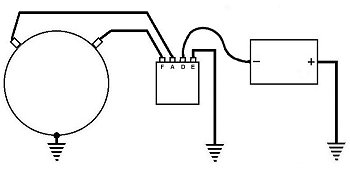
|
British DC Generator
|
Triumph, BSA, Norton and others through the 1960s
|
One of the earliest motorcycle charging systems. Note the positive ground.
|
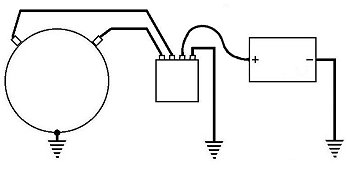
|
Euro DC Generator
|
Moto Guzzi & BMW through the 1970s
|
Identical to the British example except for the negative ground.
|
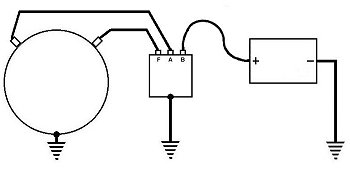
|
Harley-Davidson DC Generator
|
Harley-Davidson Big Twins through 1969, Sportsters through 1984
|
Very similar to the Euro DC generator, except that the regulator is self-grounding.
|
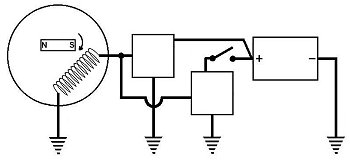
|
Early Half-Phase, Permanent Magnet Alternator
|
Off-road machines, very small bikes and scoooters
|
Some examples did not have a regulator but relied on the loads themselves to keep output in check.
|
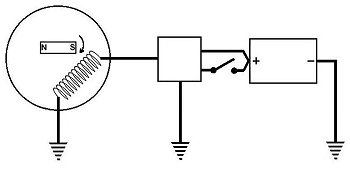
|
Later Half-Phase, Permanent Magnet Alternator
|
Later small motorcycles
|
A later, improved version of the previous system, wherein the regulator is incorporated into the same housing as the rectifier.
|
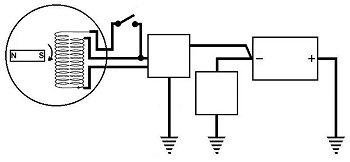
|
British Single-Phase Permanent Magnet Alternator
|
Triumph, BSA, Norton and others from mid-1960s through end of pushrod era (1980s)
|
Dual voltage control -- a switch-able stator, and a zener diode regulator. The zener was simply a resistive short across the battery that automatically turned on at a preset voltage.
|
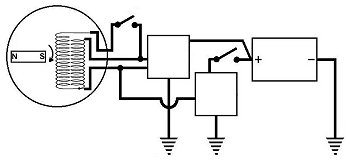
|
Early Non-Brit Single-Phase Permanent Magnet Alternator
|
Asian and Euro twin-cylinder machines through the 1970s (CB350, CB450, etc.)
|
The Asian version of the switch-able stator system, with the notable improvement being the use of an SCR based regulator that shorted the stator instead of the battery.
|
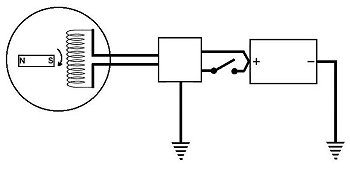
|
Later Non-Brit Single-Phase, Permanent Magnet Alternator
|
Honda CB/CM250, smaller Polaris ATVs
|
More modern version of the single phase system, with the regulator incorporated into the same housing as the rectifier.
|
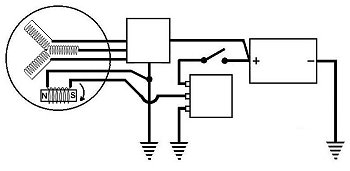
|
Early Three-Phase, Electromagnet Alternator
|
Medium to large Asian multicylinder bikes (CB750, CB550, etc.) to about 1975
|
Long the traditional alternator, this one continues today in the more modern form shown below.
|
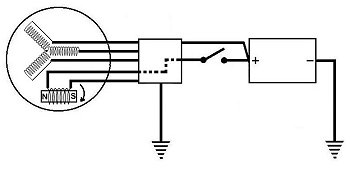
|
Later Three-Phase, Electromagnet Alternator
|
Large Asian bikes after about 1975 (CB750 Auto, other Honda fours)
|
More modern version of the three phase electromagnet system.
|
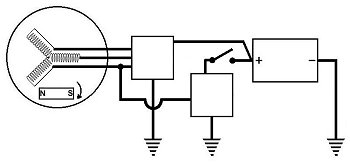
|
Early Three-Phase, Permanent Magnet Alternator
|
Four-cylinder Honda Gold Wing through 1979, KZ900
|
Permanent magnet version of the three-phase alternator
|
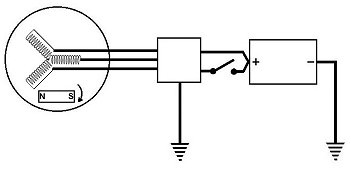
|
Later Three-Phase, Permanent Magnet Alternator
|
Four-cylinder Wings after 1979, CBRs, ZXs (in fact nearly all Kawasakis including ATVs and watercraft), GSXRs, later Ducatis. The most common system in the powersports industry at present.
|
More modern version of the three phase permanent magnet system.
|
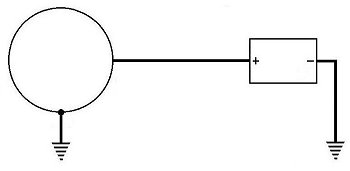
|
Three-Phase Integral Alternator
|
Six-cylinder Gold Wings, Suzuki Katanas, a few Kawasaki models (early Concours, Diesel Mule, ZR1200, ZRX1200R)
|
Uncommon, very automotive design, fully self-contained
|

 ®
®












